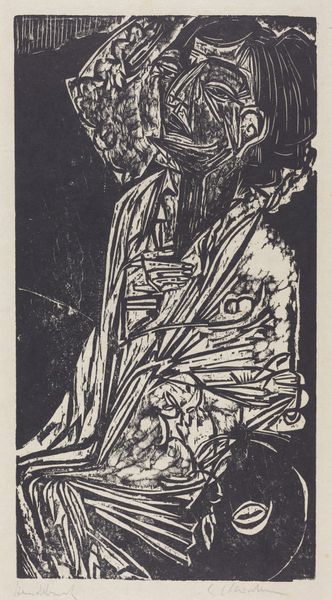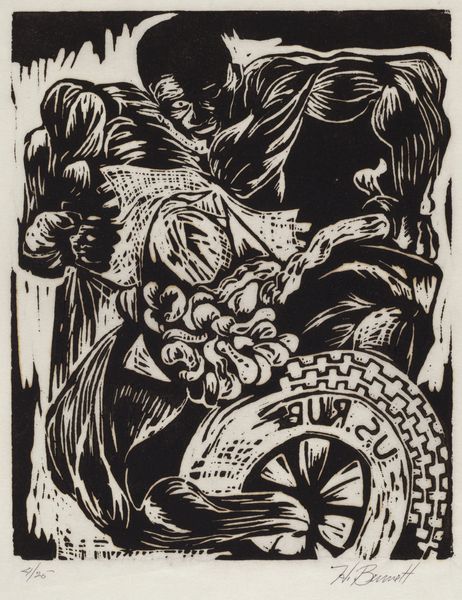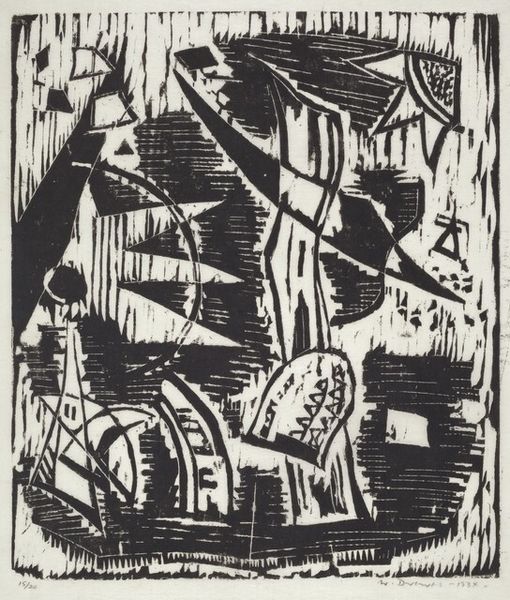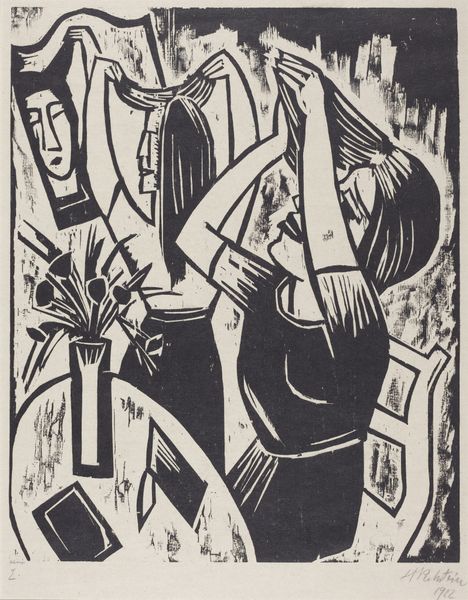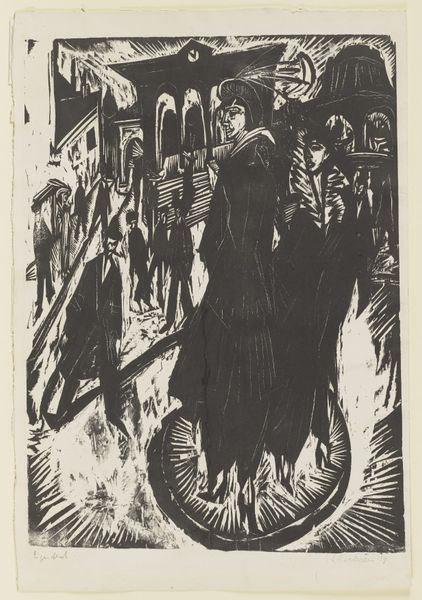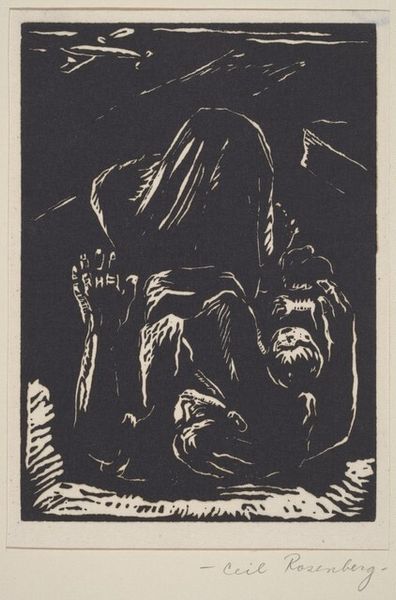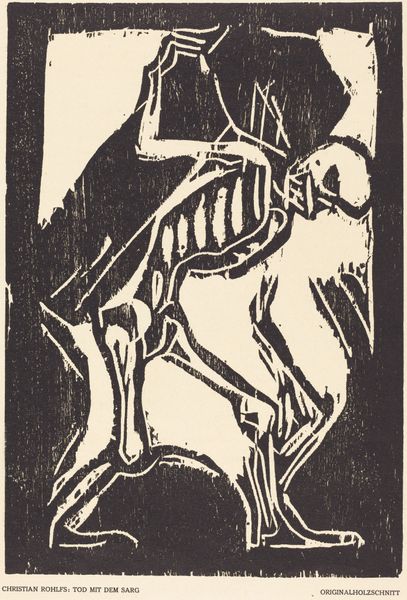
drawing, graphic-art, print, paper, woodcut
#
drawing
#
graphic-art
#
medieval
#
narrative-art
#
pen drawing
# print
#
pen illustration
#
figuration
#
paper
#
woodcut
#
line
Dimensions: height 325 mm, width 273 mm
Copyright: Rijks Museum: Open Domain
Editor: Here we have Fré Cohen’s "Hans en Grietje" from 1929, a graphic art print on paper with bold lines depicting what looks like children in a dense forest. There’s a kind of solemn quality to it. How do you interpret this work? Curator: Well, immediately, the title draws our attention to the unsettling undercurrents in children's stories, and how they're often used to impart morals… or enforce conformity. The stark contrast of the woodcut, the children almost lost within this claustrophobic, linear forest… What could this possibly say about children and women's roles in the 1920s in Europe? Editor: Conformity? That's interesting, can you tell me more? Curator: Think about the original tale. It's about resource scarcity, familial breakdown, and ultimately, the triumph of cunning – Hans and Gretel’s survival depends on outsmarting a predatory woman. Cohen, living through the interwar period, may be using this fairytale as a lens to comment on societal pressures, especially on women to conform to traditional roles or face dire consequences. Do you see that in the rigidity of those figures? Editor: I guess I see your point. But I always just thought of fairytales as warnings. Curator: Exactly, warnings that reflect societal anxieties and power structures. The dark, looming forest can be viewed as symbolic of the limited options available, particularly for women, and the children's journey reflecting this time of political upheaval and struggle. What do you notice about how gender seems to be represented in this fairytale? Editor: Now that you mention it, there’s this contrast in cunning between Gretel and the witch. The witch gets punished but is it only because she tried to break out from traditional roles? Maybe there's no redemption if you break out of what is expected of you. Curator: Precisely! And it’s important to question the role that narrative plays in reinforcing those expectations. Seeing the fairytale as a tool is helpful for examining its meaning and understanding broader social dynamics. Editor: Thank you for providing me with all of these new angles to view the artwork from, seeing how "Hans and Gretel" connects to that larger dialogue has expanded how I perceive the messages behind these tales.
Comments
No comments
Be the first to comment and join the conversation on the ultimate creative platform.
